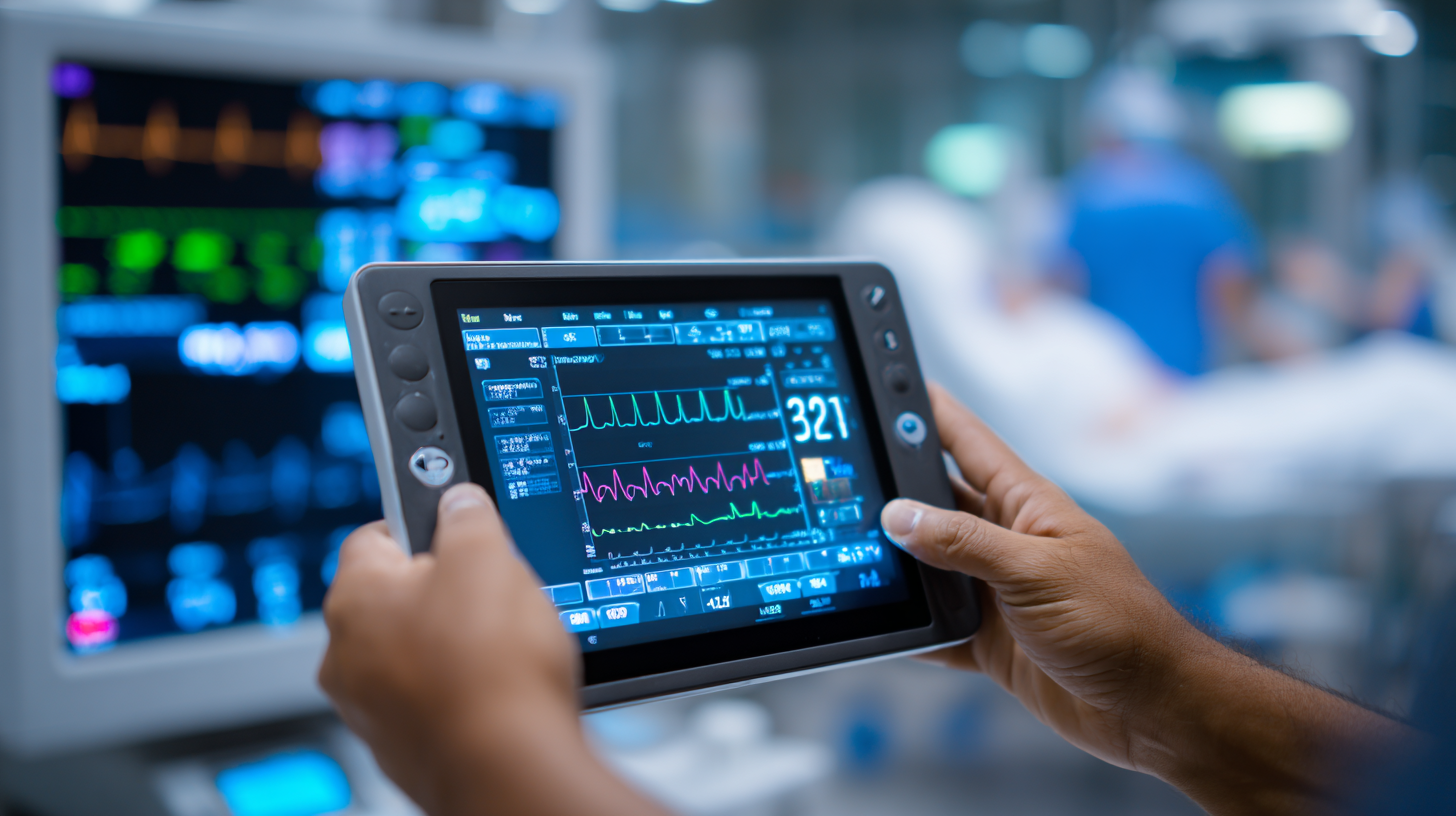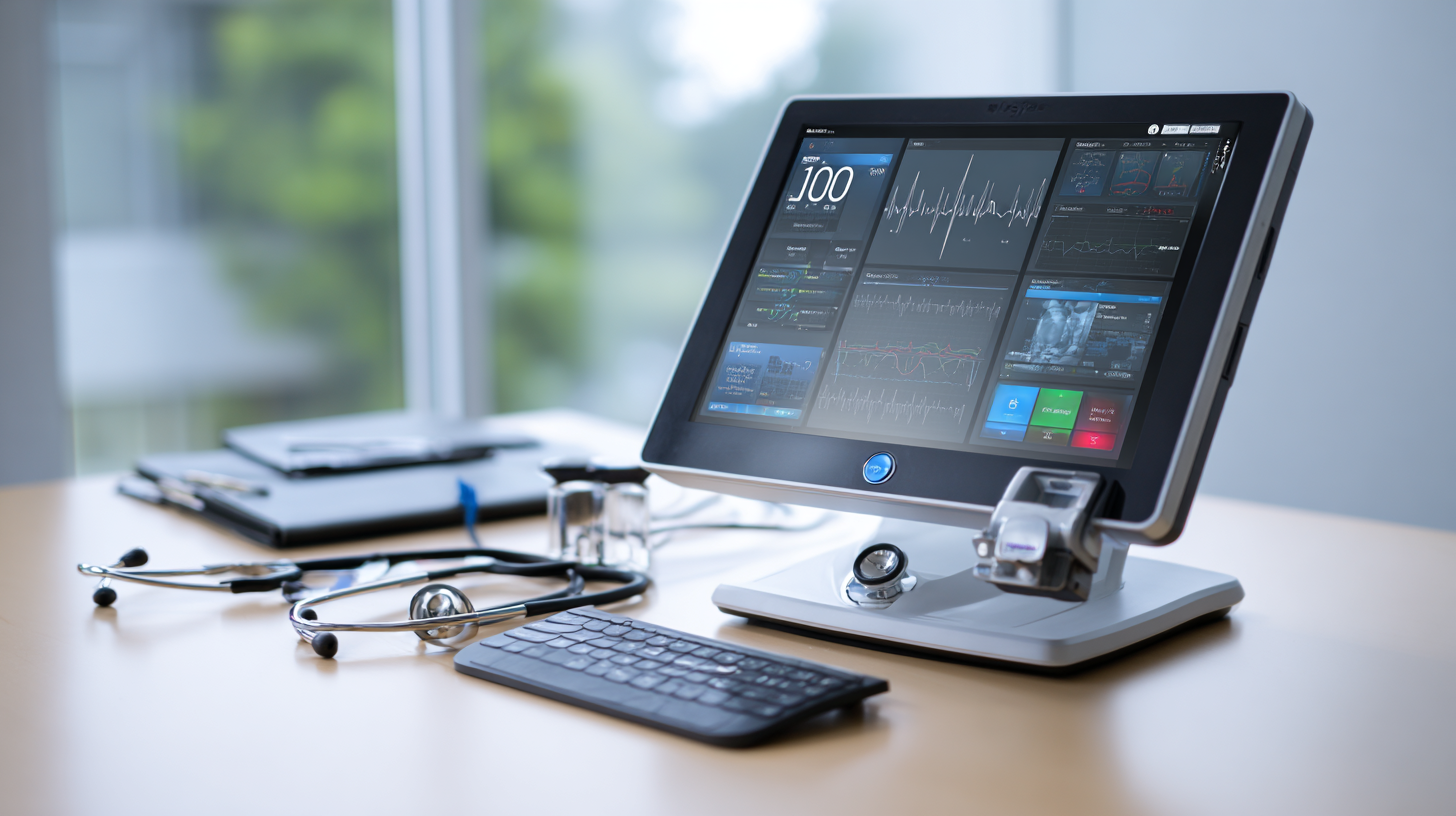Leave Your Message
In the rapidly evolving landscape of healthcare technology, the demand for efficient patient monitoring solutions has never been more critical. According to a report by Grand View Research, the global market for portable medical monitors is projected to reach USD 8.75 billion by 2025, driven by the increasing prevalence of chronic diseases and the growing emphasis on home healthcare.
The rise of telemedicine and remote patient monitoring has further underscored the importance of selecting the right Medical Monitor Portable to enhance patient care efficiency. As healthcare providers strive to offer timely and accurate patient assessments, understanding the key strategies for choosing the best portable medical monitoring devices is essential.
This blog will outline top strategies to ensure optimal patient outcomes while navigating the complexities of modern medical technology.

When selecting a portable medical monitor, it’s crucial to identify key features that ensure optimal patient monitoring. One of the most important aspects to consider is the monitor's versatility in measuring various vital signs, such as heart rate, blood pressure, oxygen saturation, and temperature. A device that offers multiple functions can significantly enhance patient care by enabling healthcare providers to make informed decisions swiftly based on comprehensive data. Additionally, the accuracy of these measurements is paramount; thus, investing in monitors with advanced sensor technology is advisable for reliable patient assessments.
Another feature to consider is the monitor's connectivity options. Modern portable medical monitors should be equipped with wireless capabilities, allowing seamless integration with electronic health records (EHR) systems. This connectivity facilitates real-time data sharing among healthcare professionals, improving communication and coordination of care. Furthermore, a user-friendly interface with clear displays and intuitive controls can streamline the monitoring process, ensuring that medical staff can respond quickly to any changes in a patient's condition. Prioritizing these features will enhance the overall efficiency of patient care in various settings.
This chart illustrates the importance rating of key features to consider when selecting a portable medical monitor. Each feature is rated on a scale from 1 to 10, highlighting their significance in enhancing patient care efficiency.
The landscape of portable medical monitoring devices is rapidly transforming, driven by emerging technologies that aim to enhance patient care efficiency. Innovations such as wearable sensors and telehealth platforms have revolutionized the way healthcare providers monitor vital signs remotely. These devices not only enable real-time data collection but also facilitate timely interventions, thereby improving patient outcomes. With the ability to track parameters like heart rate, blood pressure, and oxygen saturation from anywhere, healthcare professionals can offer more personalized care while reducing the burden on hospital resources.
Moreover, advanced analytics and artificial intelligence are playing a crucial role in the future of portable medical monitoring. By leveraging machine learning algorithms, these devices can analyze vast amounts of data to identify trends and potential health risks. This predictive capability allows for proactive management of chronic conditions and offers healthcare providers deeper insights into patient health. As technology continues to advance, we can expect portable medical monitors to evolve into essential tools that not only enhance patient monitoring but also streamline healthcare delivery, ultimately leading to a more efficient system.
 As we advance toward 2025, the landscape of portable medical monitors is evolving rapidly, offering healthcare professionals enhanced tools for patient monitoring. According to a recent report from Market Research Future, the portable medical device market is projected to grow at a CAGR of 12.5%, reflecting the increasing demand for efficient patient care solutions. Healthcare providers are now equipped with devices that not only monitor vital signs but also integrate seamlessly with telehealth platforms, significantly improving care delivery and responsiveness.
As we advance toward 2025, the landscape of portable medical monitors is evolving rapidly, offering healthcare professionals enhanced tools for patient monitoring. According to a recent report from Market Research Future, the portable medical device market is projected to grow at a CAGR of 12.5%, reflecting the increasing demand for efficient patient care solutions. Healthcare providers are now equipped with devices that not only monitor vital signs but also integrate seamlessly with telehealth platforms, significantly improving care delivery and responsiveness.
When selecting a portable medical monitor, consider the device's interoperability with existing healthcare systems. A seamless data exchange can lead to quicker decision-making and improve patient outcomes. For instance, the Medtronic Guardian Connect has been noted for its connectivity features, allowing real-time data sharing with healthcare teams.
Tip: Always evaluate battery life and durability, especially in emergency situations. A monitor that can last longer without recharging and withstand the rigors of a clinical environment can be pivotal. Additionally, look for user-friendly interfaces that can be easily navigated by various healthcare staff to enhance efficiency in urgent care settings.
In today’s fast-paced healthcare environments, integrating portable medical monitors into routine settings is essential for enhancing patient care efficiency. These devices enable healthcare professionals to continuously track vital signs without being tethered to fixed monitoring systems. This flexibility allows for better mobility and more accurate real-time data collection, facilitating timely decisions in patient management. As a result, clinicians can swiftly identify changes in a patient's condition and initiate appropriate interventions, ultimately improving outcomes.
Moreover, the incorporation of mobile monitoring solutions supports a more proactive approach to patient care. By equipping nurses and caregivers with easy-to-use portable monitors, healthcare teams can effectively prioritize their workflows, ensuring that critical patients receive the attention they need sooner. This shift not only streamlines operations but also empowers healthcare providers to deliver high-quality care, thereby reshaping the traditional models of patient monitoring. Emphasizing these best practices is crucial as the industry continues to evolve, underscoring the need for adaptable technology in everyday healthcare routines.
 When selecting a portable medical monitor, it is crucial to understand the regulatory standards governing medical monitoring equipment. Compliance with these standards ensures that the devices meet safety and efficacy requirements, which is vital for delivering high-quality patient care. Organizations such as the FDA in the United States provide guidelines that manufacturers must follow to ensure their products are reliable. This includes rigorous testing processes, demonstrating the device's accuracy in monitoring vital signs and other health data, and obtaining the necessary certifications before the equipment is allowed for clinical use.
When selecting a portable medical monitor, it is crucial to understand the regulatory standards governing medical monitoring equipment. Compliance with these standards ensures that the devices meet safety and efficacy requirements, which is vital for delivering high-quality patient care. Organizations such as the FDA in the United States provide guidelines that manufacturers must follow to ensure their products are reliable. This includes rigorous testing processes, demonstrating the device's accuracy in monitoring vital signs and other health data, and obtaining the necessary certifications before the equipment is allowed for clinical use.
As the market for portable medical monitoring equipment continues to grow, projected to reach $621.92 million by 2024 and $851.22 million by 2032, selecting compliant devices becomes even more relevant. Healthcare providers must prioritize these standards when choosing monitors to enhance patient care efficiency. Increased demand for wearable health devices further emphasizes the need for adherence to regulatory frameworks, as these technologies not only provide real-time data but also contribute to personalized healthcare experiences. Understanding and implementing these regulatory standards is essential for ensuring optimal patient outcomes in a rapidly evolving medical landscape.
